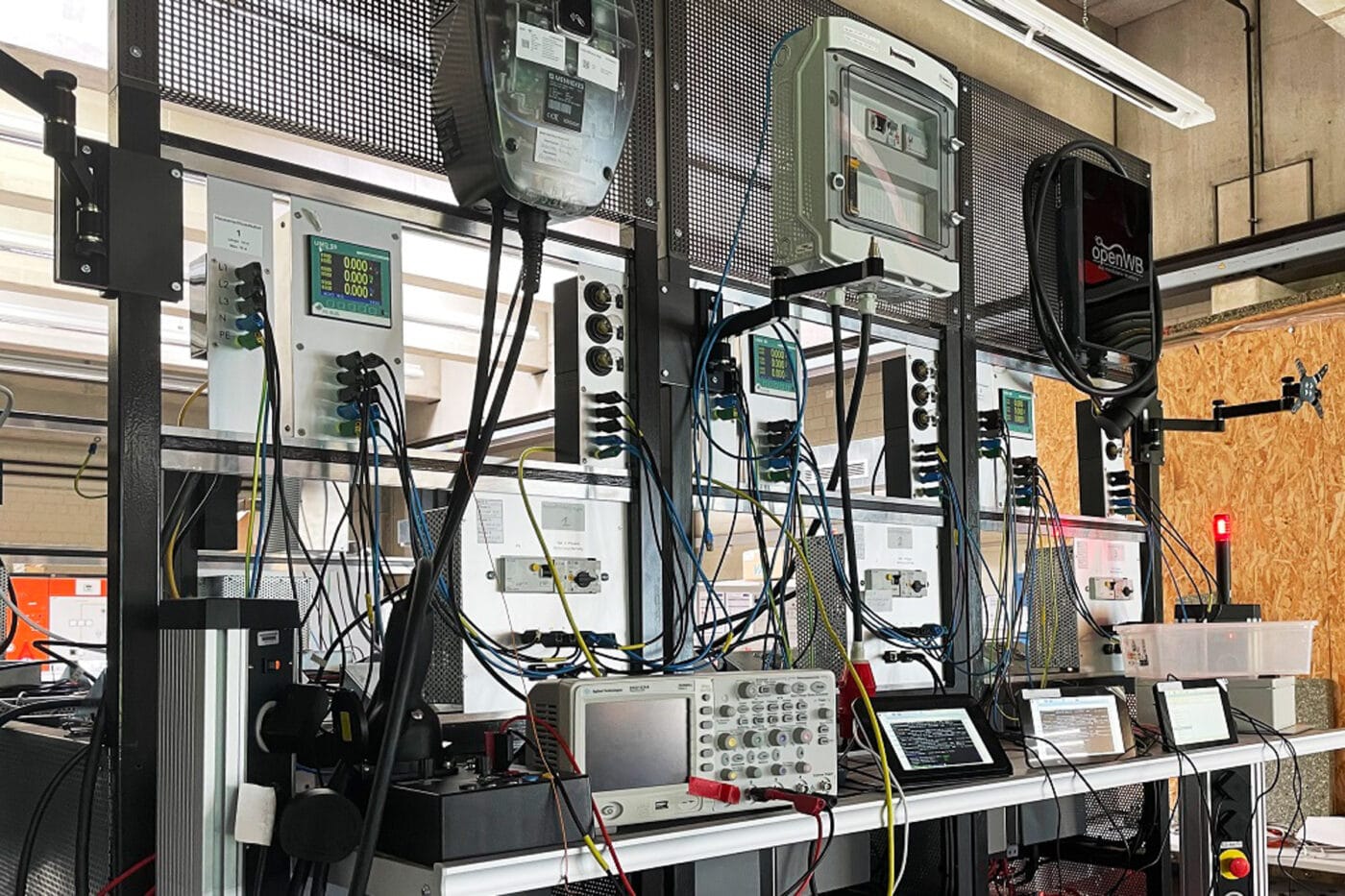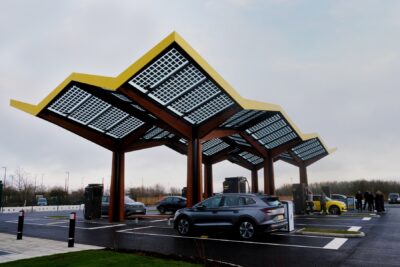Cologne researchers are working on mini distribution grids including multiple households
If too many electric cars are charged on a street at the same time, this can lead to a power outage due to grid overload. This hypothetical scenario is still in many people’s minds, even though numerous field tests have long since disproved the myth that the probability of a blackout due to charging electric cars is very low. Nevertheless, research and development in this area have continued, as controlled and optimised charging of several electric cars has tangible economic advantages – the grid expansion that is necessary anyway can be planned differently.
The challenge: so-called load management, which controls several charging stations without overloading the grid connection, is generally only possible locally – i.e. per property or grid connection. So while 20 charging points in the underground car park of an apartment block can be optimally controlled by load management, five wallboxes at five single-family homes in one street usually cannot. And this is precisely where the Cologne-based GridMaximiser project comes in – and fully utilises the possibilities of the existing power grid.
As project manager Eberhard Waffenschmidt from the Cologne Institute for Renewable Energy (CIRE) at the Faculty of Information, Media and Electrical Engineering at TH Köln explains, the solution is based on the swarm principle. The developed application collects measurement data from existing charging stations in the buildings and can determine the current grid status on this basis. This is an essential prerequisite for controlling charging processes in such a way that the distribution grids, i.e. cables and transformers, are not overloaded and the permitted voltage bands, i.e. the upper and lower voltage limits, are not exceeded or undercut, according to the Cologne-based company.
“There are two costly options to prevent overloading: Firstly, the cost-intensive and lengthy grid expansion and secondly, equipping buildings with complex measurement technology, which is also often difficult to implement due to regulatory requirements,” says Waffenschmidt. ‘We are pursuing a simpler way of coordinating the charging processes with each other and controlling them in a way that serves the grid.’ The second project manager, Ingo Stadler, adds: “Our solution does not require a connection to the grid operator’s control centre. An additional control unit to distribute the available charging power is also not required. We rely on a charging infrastructure that manages itself independently after installation, without a centralised authority taking over control. This means less effort for planning and coordination.”
To test their own solution, the team set up their own distribution network in the laboratory. Hundreds of metres of cable, inverters, batteries and measurement and control units were interconnected in such a way that six households were simulated – three of them with wallboxes. The users of the electric cars can specify by what time which charging level should be reached – the system calculates exactly when and at what power. “Our algorithm can determine the grid status. To do this, it uses measurement data such as the electrical voltage and current as well as standard load profiles to determine the aggregated power consumption of appliances such as ovens or washing machines within a household. Based on this, the programme allocates free grid capacities to e-cars to be charged. In the process, specified voltage limits are adhered to at all points in the grid,” explained research associate André Ulrich.
The application has been patented in the USA and is still being examined in the EU. A follow-up project is also already planned: The researchers want to expand their laboratory-tested solution to include an energy management system so that other consumers, such as heat pumps, can also be integrated. In the final step, a real-life trial with a grid operator is also planned.
th-koeln.de (in German)





0 Comments